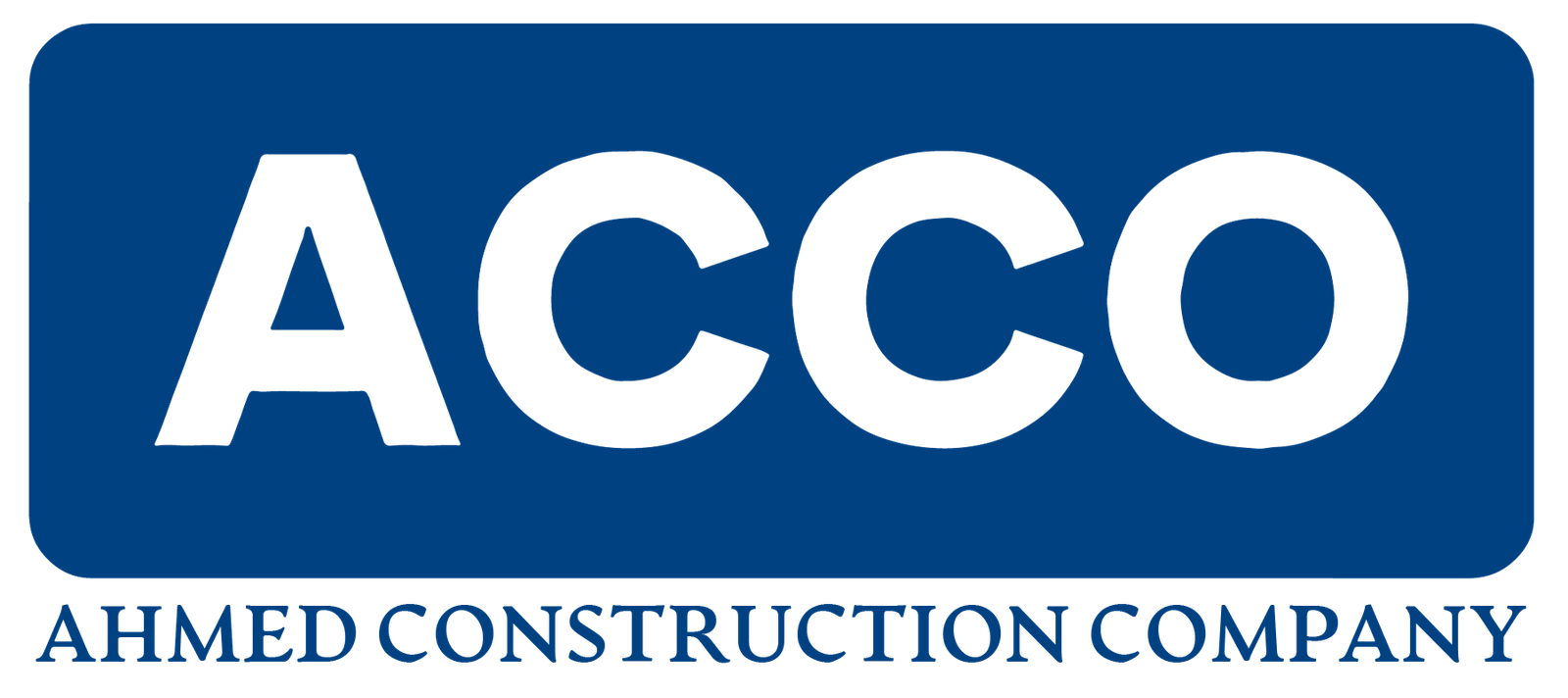ACCO Residential, Industrial & Building Complexes Design And Construction
Table of Contents
- Introduction
- Importance of Professional Design and Construction
- Key Considerations for ACCO Residential Projects
- Industrial Complexes: Meeting Functional and Safety Requirements
- Building Complexes: Balancing Aesthetics and Functionality
- Sustainable Design Practices for ACCO Projects
- Incorporating Technology in Construction
- Ensuring Quality Control and Compliance
- The Role of Project Management in ACCO Construction
- Cost Considerations for ACCO Projects
- Conclusion
- Frequently Asked Questions (FAQs)
Introduction
ACCO Residential, Industrial, and Building Complexes are highly sought after in the construction industry. These projects require careful planning, design expertise, and efficient execution to meet the demands of modern living and working spaces. This article delves into the importance of professional design and construction for ACCO projects, highlighting key considerations, sustainable practices, technological advancements, and quality control measures that contribute to successful outcomes.
Importance of Professional Design and Construction
Professional design and construction play a vital role in the success of ACCO residential, industrial, and building complexes. Skilled architects, engineers, and construction teams collaborate to create structures that are functional, aesthetically pleasing, and meet the specific needs of clients. The following are key reasons why professional design and construction are crucial:
1. Safety and Structural Integrity
Professional design ensures that ACCO projects adhere to safety regulations and building codes. Engineers analyze structural loads, seismic considerations, and other factors to ensure the safety and longevity of the construction.
2. Optimal Space Utilization
Efficient design maximizes the use of available space in residential, industrial, and building complexes. It ensures that every area serves its intended purpose, contributing to the overall functionality of the structure.
3. Aesthetics and Visual Appeal
Professional design enhances the visual appeal of ACCO projects. Architects consider elements such as building facades, landscaping, and interior design to create visually appealing and harmonious environments.
4. Improved Energy Efficiency
Integrating energy-efficient design features reduces energy consumption and environmental impact. Proper insulation, ventilation, and renewable energy systems contribute to sustainable living and operational cost savings.
Key Considerations for ACCO Residential Projects
ACCO residential projects require careful planning and attention to detail. Here are some key considerations for successful residential construction:
1. Client Needs and Lifestyle
Understanding the client’s requirements and lifestyle is essential to design residential spaces that meet their expectations. Factors such as the number of rooms, amenities, and accessibility features should be incorporated into the design.
2. Functional Floor Plans
Efficient floor plans optimize the use of available space and create a comfortable living environment. Designers should consider room layouts, storage spaces, and traffic flow to ensure functionality.
3. Safety and Security
Residential projects should prioritize safety and security measures. This includes incorporating fire safety systems, secure entrances, and adequate lighting for common areas.
4. Community Integration
ACCO residential projects should harmonize with the surrounding community. Consideration should be given to the architectural style, landscape design, and overall aesthetics to ensure a cohesive blend with the neighborhood.
Industrial Complexes: Meeting Functional and Safety Requirements
ACCO industrial complexes are designed to accommodate various industries and their specific operational needs. The design and construction of industrial complexes require careful consideration of the following factors:
1. Workflow Efficiency
Industrial complexes should be designed to facilitate smooth workflow processes. This includes efficient layouts, optimized material handling systems, and proper zoning for different production areas.
2. Safety Regulations and Standards
Industrial complexes must comply with stringent safety regulations to protect workers and minimize risks. Adequate ventilation, safety equipment, and emergency response systems are critical considerations.
3. Scalability and Flexibility
Designing industrial complexes with scalability and flexibility in mind allows for future expansion and adaptability to changing business needs. This ensures long-term viability and cost-effectiveness.
4. Environmental Impact
Sustainable practices should be integrated into the design and construction of industrial complexes. This includes incorporating energy-efficient systems, waste management strategies, and eco-friendly materials.
Building Complexes: Balancing Aesthetics and Functionality
Building complexes, such as commercial and mixed-use developments, require a delicate balance between aesthetics and functionality. Here are important considerations for successful building complex design:
1. Zoning and Space Allocation
Efficient space allocation ensures that different functions within the building complex are well-planned. Zoning areas for retail, offices, recreational spaces, and parking contribute to an organized and user-friendly environment.
2. Accessibility and Universal Design
Building complexes should be accessible to people of all abilities. Incorporating universal design principles ensures that everyone can navigate the complex comfortably and safely.
3. Integration of Amenities
Well-designed building complexes often incorporate amenities such as common areas, green spaces, and recreational facilities. These amenities enhance the overall experience and value for occupants and visitors.
4. Harmonious Design Language
Maintaining a consistent design language throughout the building complex creates a cohesive and aesthetically pleasing environment. This includes elements such as facade design, signage, and interior decor.
Sustainable Design Practices for ACCO Projects
ACCO projects can contribute to sustainability and reduce environmental impact through thoughtful design practices:
Passive Design Strategies: Incorporating natural lighting, shading, and ventilation techniques reduces reliance on artificial lighting and HVAC systems.
Use of Renewable Energy: Integrating solar panels, wind turbines, or geothermal systems can generate clean energy for the project.
Water Conservation: Implementing water-saving fixtures, rainwater harvesting systems, and efficient irrigation reduces water consumption.
Material Selection: Opting for eco-friendly and recycled materials minimizes the project’s carbon footprint and supports sustainable sourcing practices.
Incorporating Technology in Construction
The construction industry is embracing technological advancements to improve efficiency and project outcomes:
Building Information Modeling (BIM): BIM software allows for accurate 3D modeling, clash detection, and collaborative project management, reducing errors and optimizing construction processes.
Drones and Robotics: Unmanned aerial vehicles (UAVs) and robotic systems enable efficient site inspections, surveying, and material transportation.
Smart Building Systems: Internet of Things (IoT) technology can be integrated into building complexes to automate functions, enhance security, and optimize energy management.
Virtual Reality (VR) and Augmented Reality (AR): VR and AR tools aid in design visualization, client presentations, and construction simulations, improving communication and project understanding.
Ensuring Quality Control and Compliance
Quality control and compliance are critical for successful ACCO projects. Here are some key measures to ensure high standards:
Regular Inspections: Conducting thorough inspections at various stages of construction helps identify and rectify any issues early on.
Quality Assurance Programs: Implementing quality assurance programs and adhering to industry standards and best practices ensures consistency and excellence in project delivery.
Compliance with Regulations: Compliance with local building codes, safety regulations, and environmental guidelines is essential for legal and ethical reasons.
Training and Skill Development: Regular training programs for construction teams enhance their skills and knowledge, promoting high-quality workmanship.
The Role of Project Management in ACCO Construction
Effective project management is crucial for the successful completion of ACCO construction projects. Project managers oversee the following aspects:
Planning and Scheduling: Project managers create comprehensive plans and schedules to ensure timely completion of tasks and coordination between different teams.
Budget Management: Monitoring project costs, optimizing resource allocation, and controlling expenses contribute to project profitability.
Risk Assessment and Mitigation: Identifying potential risks and implementing strategies to mitigate them minimizes disruptions and delays.
Stakeholder Communication: Project managers facilitate effective communication between stakeholders, including clients, contractors, and regulatory authorities, to maintain transparency and manage expectations.
Cost Considerations for ACCO Projects
ACCO projects involve various cost considerations that should be carefully managed:
Material Costs: Choosing cost-effective yet durable materials is essential to maintain project budgets without compromising quality.
Labor Expenses: Proper workforce planning and efficient utilization of labor resources help optimize labor costs.
Equipment and Machinery: Renting or purchasing equipment based on project requirements and duration can impact overall costs.
Project Timeline: Timely completion of projects reduces overhead costs and prevents potential cost escalations.
Conclusion
ACCO residential, industrial, and building complexes require professional design and construction to ensure safety, functionality, and aesthetics. By incorporating sustainable practices, embracing technological advancements, and emphasizing quality control and compliance, these projects can achieve remarkable outcomes. Effective project management, cost considerations, and client collaboration are also crucial for successful ACCO construction. With the right expertise and attention to detail, ACCO projects can create spaces that meet the diverse needs of individuals, industries, and communities.
Frequently Asked Questions (FAQs)
1. How long does it take to complete an ACCO residential project?
The duration of an ACCO residential project depends on various factors such as project size, complexity, and site conditions. On average, it can range from several months to a year or more.
2. What are the key considerations when designing industrial complexes?
Key considerations when designing industrial complexes include workflow efficiency, safety regulations, scalability, and environmental impact. These factors contribute to creating functional and future-proof industrial spaces.
3. How can ACCO projects contribute to sustainability?
ACCO projects can contribute to sustainability by incorporating passive design strategies, utilizing renewable energy sources, conserving water, and opting for eco-friendly materials. These practices reduce environmental impact and promote energy efficiency.
4. What role does technology play in ACCO construction?
Technology plays a significant role in ACCO construction, enabling improved project management, automation of tasks, enhanced communication, and more accurate design and construction processes.
5. How can I ensure the quality of an ACCO project?
To ensure quality in ACCO projects, regular inspections, adherence to regulations and standards, comprehensive quality assurance programs, and continuous skill development for construction teams are essential.

